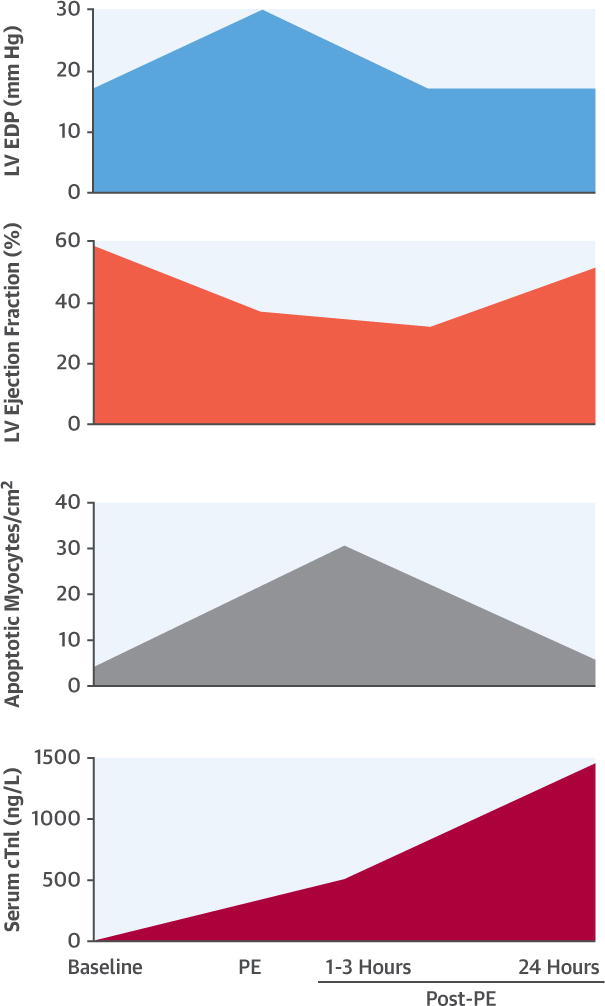CENTRAL ILLUSTRATION. cTnl Release and Reversible LV Dysfunction Following Transient Preload Elevation.

In a porcine model oftransient preload elevation elicited by intravenous administration of PE, we demonstrated reversible systolic dysfunction that was accompanied by a temporary 6-fold increase in myocyte apoptosis in the absence of myocardial ischemia. Although histopathological analyses confirmed the absence of necrosis or infarction, we observed a gradualrise of serum cardiac troponin I (cTnI) that exceeded the 99th percentile of normal animals 30 min after preload elevation and rose to readily detectable levels 24 h later. Collectively, these results demonstrate that a transient elevation in preload produces mechanical stretch-induced myocyte injuryand measurable cTnI release in the absence of ischemia or necrosis that is associated with reversible contractile dysfunction and myocyteapoptosis. This may explain why cTnI elevations are frequently observed in patients without clinical signs or symptoms of myocardial ischemia. EDP = end-diastolic pressure; LV = left ventricular; PE = phenylephrine.
